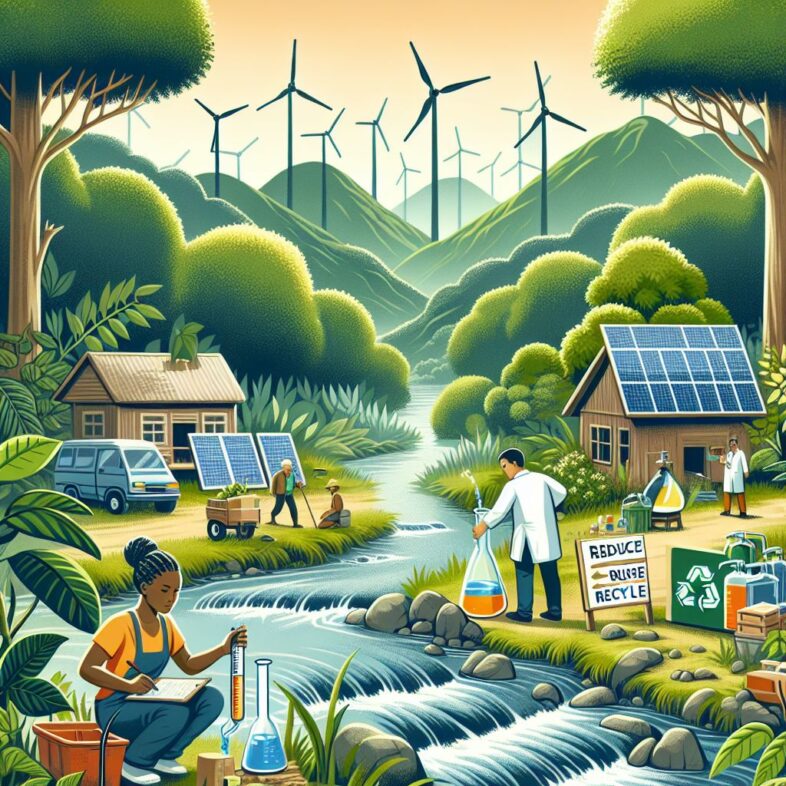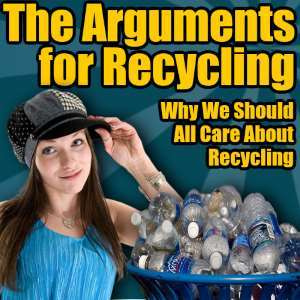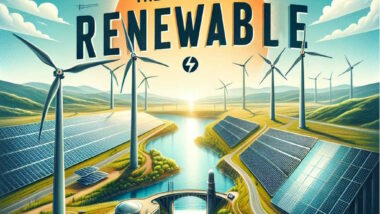The Most Important and Beneficial Reasons to Recycle
Key Takeaways
- Recycling conserves natural resources by reducing the need for raw material extraction, potentially saving up to 95% of the energy used to process virgin materials.
- Diverting materials from landfills through recycling reduces greenhouse gas emissions by an estimated 30-90% for most materials compared to virgin production.
- The recycling industry creates 10 times more jobs than landfill operations, contributing significantly to economic growth and sustainability.
- Proper recycling practices protect wildlife habitats and reduce ocean plastic pollution, with approximately 8 million metric tons of plastic entering our oceans annually.
- Starting a home recycling system with proper sorting can increase recycling efficiency by up to 25%, making individual actions crucial for global impact.
Every single can, bottle, and cardboard box we recycle contributes to a larger environmental movement that’s reshaping our planet’s future. Recycling isn’t just a suggestion anymore—it’s becoming an essential practice as we face unprecedented resource depletion and pollution.
Recycling turns materials that would otherwise become waste into valuable resources, creating a circular economy that benefits both our environment and our communities. By understanding the profound impact of recycling, we can make more informed decisions about our consumption habits and waste management practices.
The Environmental Crisis We Can’t Ignore
We’re standing at a critical crossroads for our planet. With landfills reaching capacity, oceans filling with plastic, and natural resources being depleted at alarming rates, our waste management practices require immediate transformation. Each year, the average American generates about 4.9 pounds of waste daily, with only about 32% being recycled or composted.
The environmental consequences of our throwaway culture are severe and far-reaching. Landfills produce methane, a greenhouse gas 25 times more potent than carbon dioxide. Meanwhile, extraction of virgin materials for new products devastates ecosystems through mining, logging, and drilling operations that disrupt habitats and contribute to biodiversity loss.
Climate change acceleration, habitat destruction, and pollution of our air, water, and soil represent just the tip of the iceberg. The good news? Recycling offers a powerful solution that addresses multiple environmental challenges simultaneously while providing economic benefits.
10 Crucial Benefits of Recycling for Our Planet
Recycling isn’t merely about keeping items out of landfills—it’s a comprehensive environmental strategy with cascading positive effects. The benefits extend far beyond what many people realize, touching every aspect of our environment and economy. For instance, recycling can play a significant role in waste-to-energy processes, which help convert waste materials into usable energy, further contributing to environmental sustainability.
1. Conserves Natural Resources and Raw Materials
Every recycled item means fewer raw materials that need to be extracted from the Earth. When we recycle paper, we save trees that would otherwise be cut down for pulp. One ton of recycled paper saves approximately 17 trees, 7,000 gallons of water, and 3 cubic yards of landfill space. Similarly, recycling metals reduces the need for environmentally destructive mining operations.
Recycling aluminum is particularly impactful—it’s 100% recyclable and can be recycled indefinitely without quality loss. Using recycled aluminum requires 95% less energy than producing aluminum from bauxite ore. The conservation of these natural resources helps preserve ecosystems and wildlife habitats that would otherwise be destroyed through resource extraction.
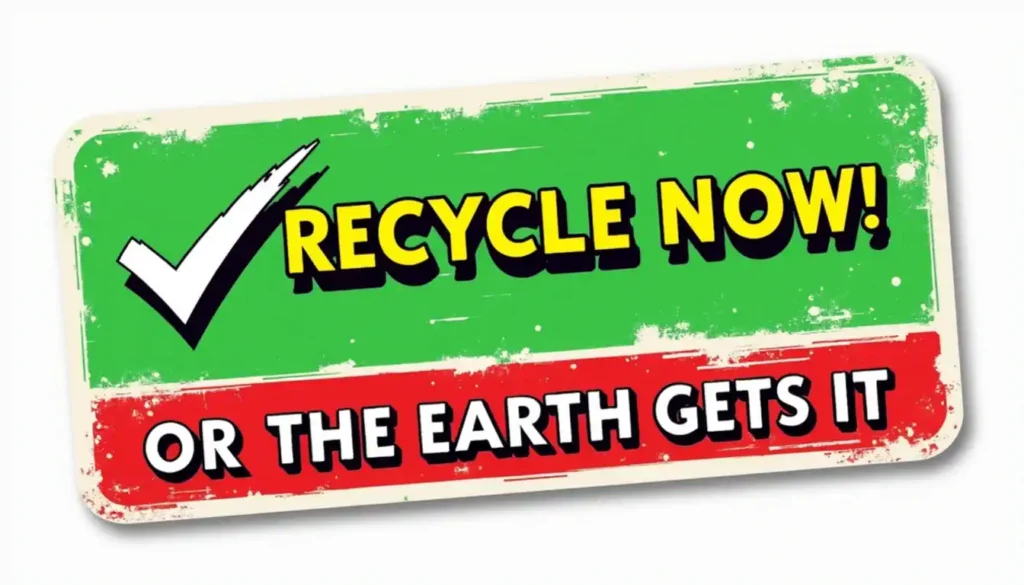
Resource Conservation Through Recycling
Paper recycling: Saves 17 trees per ton
Aluminum recycling: Saves 4 tons of bauxite and 700 kg of coal per ton
Plastic recycling: Saves up to 3.8 barrels of oil per ton
Glass recycling: Saves 1.2 tons of raw materials per ton. Discover more about the zero waste movement and its impact on resource conservation.
2. Reduces Landfill Waste and Pollution
Our landfills are reaching critical capacity in many regions. By diverting materials through recycling, we significantly extend the lifespan of existing landfills and reduce the need for new ones. This matters because landfills create numerous environmental problems, including groundwater contamination from leachate, methane emissions, and the loss of usable land.
When organic materials decompose in landfills, they produce methane gas, which contributes significantly to climate change. By recycling paper, cardboard, and other organic materials, we prevent these materials from generating methane in landfills. Additionally, many landfilled items contain toxic substances that can leach into soil and water supplies, creating long-term environmental hazards that recycling helps prevent.
3. Saves Energy in Manufacturing Processes
Manufacturing products from recycled materials typically requires significantly less energy than creating the same products from virgin materials. This energy conservation has profound environmental implications, particularly in reducing carbon emissions associated with energy production.

4. Cuts Greenhouse Gas Emissions
Recycling directly impacts our climate crisis by reducing greenhouse gas emissions at multiple points in the product lifecycle. When manufacturers use recycled materials instead of virgin resources, they typically consume less energy, which means fewer fossil fuels burned and lower carbon emissions. This reduction can be substantial—recycling aluminum cans saves 95% of the energy used to make the same amount of aluminum from its virgin source.
Additionally, keeping organic materials like paper, cardboard, and food waste out of landfills prevents methane production. Methane is a greenhouse gas approximately 25 times more potent than carbon dioxide in trapping heat in the atmosphere. The EPA estimates that recycling and composting reduced carbon dioxide emissions by 186 million metric tons in 2018 alone—equivalent to removing 40 million cars from the road for a year.
5. Creates Jobs and Economic Growth
The recycling industry is a powerful economic engine, creating significantly more jobs than landfill operations. Collecting, processing, and manufacturing recycled materials provides employment opportunities across various skill levels and sectors, from collection and sorting to high-tech recycling innovation.
Studies have consistently shown that recycling creates about 10 times more jobs than waste disposal. These are often local jobs that cannot be outsourced, strengthening community economies. The economic impact extends beyond direct employment to include tax revenue generation and support for adjacent industries like transportation and equipment manufacturing.
How Recycling Protects Ecosystems
Beyond the obvious benefits of waste reduction, recycling plays a crucial role in protecting both terrestrial and aquatic ecosystems. By reducing the demand for virgin materials, recycling helps preserve natural habitats that would otherwise be destroyed or degraded through resource extraction activities.
Wildlife Habitat Preservation
Mining operations for metals, quarrying for minerals, and logging for paper production all cause significant habitat destruction. When we recycle these materials, we directly reduce the pressure to extract more raw resources. For example, recycling one ton of paper saves 17 trees and the ecosystems they support. These preserved habitats are critical for biodiversity, providing homes for countless plant and animal species.
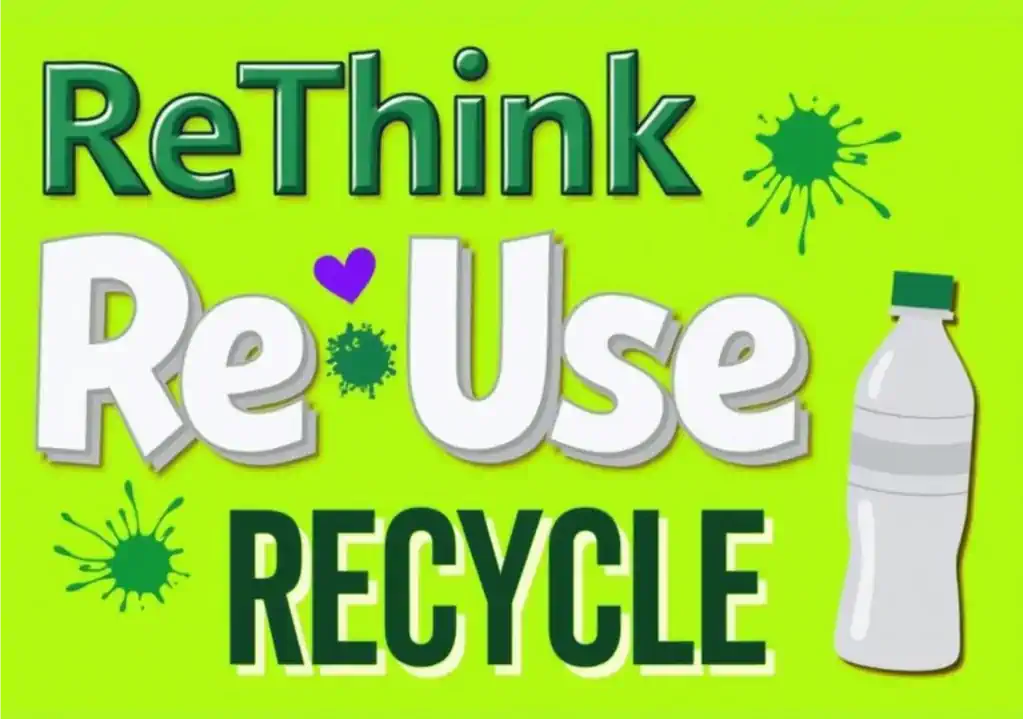
Reduces Ocean Plastic Contamination
Approximately 8 million metric tons of plastic enter our oceans annually, creating devastating consequences for marine life. Sea turtles, seabirds, fish, and marine mammals mistake plastic for food or become entangled in it, often with fatal results. Scientists estimate that by 2050, there could be more plastic than fish in the ocean by weight if current trends continue. To combat this, initiatives like zero waste are gaining traction, encouraging reduced plastic use and increased recycling.
Recycling plastic significantly reduces the amount that ends up in waterways and eventually in our oceans. When plastic waste is properly collected and processed, it stays within the circular economy rather than polluting natural environments. This protection of marine ecosystems is essential not just for wildlife but for the millions of people worldwide who depend on healthy oceans for their livelihoods and food security.
Prevents Toxic Chemical Leaching
Many products contain hazardous materials that can leach into soil and groundwater when improperly disposed of in landfills. Electronics, batteries, and certain plastics are particularly problematic. By recycling these items through specialized programs, we prevent toxic substances like lead, mercury, and cadmium from contaminating ecosystems.
This contamination prevention is especially important for protecting watershed areas, which collect and channel water that eventually reaches larger bodies of water. Clean water systems are fundamental to all ecosystems and human communities, making proper recycling of potentially toxic items an environmental imperative.
The Economic Impact of Recycling
While environmental benefits often take center stage in recycling discussions, the economic advantages are equally compelling. Recycling creates a robust circular economy that generates value at multiple levels, from job creation to municipal cost savings and resource recovery.
The recycling industry contributes billions of dollars annually to the national economy through tax revenue, wages, and services. As raw materials become scarcer and more expensive to extract, the economic case for recycling strengthens, creating a rare alignment between environmental and economic interests. For more on how recycling impacts waste management, explore waste management careers and their role in sustainability.
Job Creation Statistics
The recycling and reuse industry employs over 1.1 million people in the United States alone, generating an annual payroll of approximately $37 billion. These jobs span various sectors, including collection, processing, manufacturing with recycled materials, and research into new recycling technologies. For every 10,000 tons of waste, landfilling creates about 6 jobs, incineration creates about 8, but recycling creates up to 36 jobs—a sixfold increase over disposal methods.
Cost Savings for Municipalities
Cities and towns across the country save millions through effective recycling programs by avoiding landfill tipping fees, which average $55 per ton nationally but can exceed $100 in regions with limited landfill capacity. These savings can be redirected to other essential community services or used to expand and improve recycling programs. Additionally, municipalities can generate revenue by selling collected recyclables to processing facilities, creating a potential income stream rather than just an expense.
Resource Recovery Value
The economic value of recovered materials is substantial and growing. For example, the aluminum in recycled cans is worth over $1,200 per ton, while recovered paper and cardboard generate billions in annual market value. As natural resources become more scarce and extraction costs rise, the value of recycled materials increases proportionally. This resource recovery creates a self-reinforcing economic incentive that aligns market forces with environmental goals.
Common Materials You Should Recycle
Understanding what can be recycled—and how to recycle it properly—is essential for effective participation in recycling programs. While specific guidelines vary by location, certain materials are commonly accepted in most recycling programs and offer significant environmental benefits when recycled.
Paper and Cardboard
Paper and cardboard represent some of the most commonly recycled materials, accounting for nearly 67% of all recycling by weight. Almost every type of paper can be recycled, including newspapers, magazines, office paper, cardboard, and paperboard packaging. When paper is recycled, it’s broken down into pulp and reformed into new paper products, saving trees, energy, and water in the process.
A single ton of recycled paper saves approximately 17 trees, 7,000 gallons of water, and enough energy to power an average home for six months. The fiber in paper can typically be recycled 5-7 times before becoming too short for papermaking, maximizing the value extracted from each harvested tree. Be sure to keep paper clean and dry for optimal recycling value.
Plastic Types and Their Recyclability
Not all plastics are created equal when it comes to recyclability. Most recycling programs accept plastic containers with resin identification codes #1 (PET) and #2 (HDPE). These include water bottles, milk jugs, and many household product containers. Plastics #3 through #7 have varying levels of recyclability depending on local facilities. Understanding the plastic numbering system is crucial for proper sorting.
PET plastic (used for most beverage bottles) is one of the most valuable and easily recycled plastics, with recycled content being used to make everything from new bottles to clothing and carpeting. HDPE plastic (milk jugs and detergent bottles) is similarly valuable and versatile. When recycling plastic containers, be sure to empty and rinse them, and leave labels on as they’ll be removed during processing. For those interested in broader environmental practices, exploring the concept of zero waste can provide additional insights into sustainable living.
| Plastic Type | Common Uses | Recyclability |
|---|---|---|
| #1 PET | Water bottles, soda bottles | Highly recyclable |
| #2 HDPE | Milk jugs, detergent bottles | Highly recyclable |
| #3 PVC | Pipes, shower curtains | Limited recyclability |
| #4 LDPE | Plastic bags, squeeze bottles | Increasingly recyclable |
| #5 PP | Yogurt containers, bottle caps | Moderately recyclable |
| #6 PS | Foam cups, packaging | Limited recyclability |
| #7 Other | Mixed plastics, acrylic | Rarely recyclable |
Glass and Metal
Glass and metals are among the most efficiently recycled materials because they can be recycled indefinitely without quality degradation. Glass bottles and jars can be melted down and reformed repeatedly, saving 30% of the energy required to produce glass from raw materials. Similarly, aluminum cans can be recycled and back on store shelves in as little as 60 days, using 95% less energy than producing aluminum from bauxite ore.
Steel and tin cans are also highly valuable recyclables, with steel being North America’s most recycled material. In fact, today’s steel products contain an average of 25% recycled content. When recycling these materials, remember that metal lids should be separated from glass containers, and while labels can stay on, containers should be relatively clean and empty.
Electronics and Batteries
Electronic waste (e-waste) is the fastest-growing waste stream globally, containing both valuable materials and toxic substances. Recycling electronics recovers precious metals like gold, silver, and copper, along with rare earth elements that are increasingly scarce. One metric ton of circuit boards can contain 40-800 times the gold concentration of gold ore mined from the earth, making e-waste recycling economically valuable. Learn more about the biological recycling process and its benefits.
Batteries contain heavy metals and other hazardous materials that can leach into soil and water if improperly disposed of. Most communities offer special collection events or drop-off locations for electronics and batteries rather than including them in curbside programs. Many electronics retailers also offer take-back programs for devices and batteries, making responsible disposal increasingly convenient.
Organic Waste Especially Food Waste
Food scraps and yard waste make up approximately 30% of what we throw away. When these materials decompose in landfills, they produce methane gas, a potent greenhouse gas. Through composting or industrial organic recycling programs, these materials can instead be converted into nutrient-rich soil amendments that improve soil health and reduce the need for chemical fertilizers.
Composting food waste returns valuable nutrients to the soil, closes the food production loop, and significantly reduces methane emissions from landfills. Many communities now offer curbside collection of organic waste, and home composting systems are becoming increasingly user-friendly, even for apartment dwellers with options like countertop composting systems and collection services.
How to Start Recycling Today
Beginning or improving your recycling journey doesn’t require massive lifestyle changes. Small, consistent actions create significant impact when multiplied across households and communities. The most important step is simply to start, then gradually improve your system as you become more comfortable with recycling practices.
Setting Up Your Home Recycling System
Creating an effective home recycling system begins with dedicated collection containers that make sorting easy and intuitive. Place recycling bins next to trash cans throughout your home—in the kitchen, bathroom, office, and any other areas where recyclables accumulate. Clear labeling is crucial, especially when first establishing the habit or when guests visit. Consider using different colored bins or visual guides showing what goes where.
Location matters tremendously for recycling success. By placing recycling bins in convenient locations where waste is generated, you’ll significantly increase participation rates. Many people find that a two-bin system in the kitchen (one for recyclables, one for trash) works well as a starting point, with additional specialized collection points for batteries, electronics, or compostables as needed. For more information on the benefits of recycling, visit Friends of the Earth.
Understanding Local Recycling Guidelines
Recycling programs vary widely between communities, so understanding your specific local guidelines is essential for effective participation. Contact your municipal waste department or visit their website to obtain detailed information about what materials they accept and how they should be prepared. Many areas now offer searchable waste databases or apps that provide item-specific disposal instructions. Learn more about the biological recycling process to enhance your recycling efforts.
Pay particular attention to contamination guidelines, as placing non-recyclable items in recycling bins can result in entire loads being rejected and sent to landfills. Common contaminants include plastic bags, food-soiled paper, and items with mixed materials that cannot be easily separated. Most programs require containers to be empty and rinsed but not necessarily spotless. Learning these specifics dramatically improves the effectiveness of your recycling efforts.
Common Recycling Mistakes to Avoid
“Wishcycling”—the practice of putting questionable items in the recycling bin hoping they’ll be recyclable—is one of the most problematic habits in household recycling. This well-intentioned mistake increases sorting costs and can contaminate entire batches of recyclable materials. When in doubt about an item’s recyclability, check local guidelines rather than guessing, or consider it trash until confirmed otherwise.
Other common mistakes include not emptying and rinsing containers, recycling items with food residue, and placing recyclables in plastic bags (which often can’t be processed at recycling facilities). Also, remember that size matters—items smaller than a credit card typically fall through sorting equipment and won’t be recycled even if made from recyclable materials. Taking time to avoid these mistakes significantly increases the effectiveness of your recycling efforts.
Beyond Recycling: The Circular Economy
While recycling is vital, it represents just one component of a truly sustainable waste management approach. The circular economy model envisions a system where resources are kept in use for as long as possible, with maximum value extracted before recovery and regeneration at the end of each service life. This approach treats “waste” as a design flaw rather than an inevitable outcome, creating closed-loop systems that minimize environmental impact while maximizing economic value.
Reducing and Reusing Before Recycling
The waste management hierarchy prioritizes reduction and reuse above recycling for good reason—preventing waste creation delivers far greater environmental benefits than managing waste after it’s generated. Reduction involves consciously consuming less and choosing products with minimal packaging or longer lifespans. This might mean buying in bulk, selecting products with less packaging, or simply buying fewer things we don’t truly need.
Reuse extends product lifecycles by finding new purposes for items or passing them along to new owners. This includes obvious practices like using reusable shopping bags, water bottles, and food containers, but also broader habits like repairing broken items, shopping secondhand, or participating in sharing economies. Organizations that help redistribute used goods—like thrift stores, tool libraries, and community swaps—play a crucial role in facilitating reuse on a larger scale.
Sustainable Product Design
True sustainability requires reimagining how products are designed from the outset. Sustainable design principles include using renewable or recycled materials, designing for durability and repairability, and ensuring products can be easily disassembled for recycling at end-of-life. Companies leading in this area create products specifically designed to be part of circular systems, with materials that maintain value through multiple lifecycles.
Consumers drive sustainable design by supporting companies that embrace these principles. Every purchase decision sends market signals about what values matter to consumers. By choosing products designed for longevity, repairability, and recyclability—and avoiding products with planned obsolescence or non-recyclable components—consumers collectively influence the direction of product design across industries. For a deeper understanding, explore the pros and cons of waste-to-energy solutions that impact sustainable practices.
The transition to truly circular systems requires collaboration between designers, manufacturers, retailers, consumers, and waste processors. When these stakeholders align around circular principles, they create regenerative systems that function more like natural ecosystems, where nothing is wasted and materials flow in continuous cycles of use and reuse.
Take Action Now for a Sustainable Future
Individual actions may seem small in the face of global environmental challenges, but collective behavior change drives systemic transformation. Start by conducting a waste audit in your home to identify your biggest opportunities for improvement, then select one or two changes to implement immediately. Focus first on high-impact areas like food waste reduction, proper recycling of your most commonly used items, or eliminating single-use plastics. As these changes become habits, gradually incorporate additional sustainable practices into your routine.
Remember that your influence extends beyond your personal habits. Share your knowledge with friends and family, advocate for better recycling programs in your community, and support policies and businesses that promote environmental sustainability. The cumulative impact of millions making better choices creates the momentum needed for larger systemic changes that will ultimately determine our environmental future.
Frequently Asked Questions
Recycling can sometimes seem complicated with different rules and systems across communities. These frequently asked questions address common concerns and misconceptions about recycling practices to help clarify the most important aspects of effective recycling.
What items can’t be recycled in standard programs?
Most standard recycling programs cannot process several common items that often cause contamination. These typically include plastic bags and film (which tangle in machinery), Styrofoam containers and packing materials, disposable coffee cups (which contain plastic linings), greasy or food-soiled paper products, certain types of glass (like windows, mirrors, and drinking glasses), and any materials with mixed components that cannot be easily separated. Additionally, very small items (smaller than a credit card) typically fall through sorting equipment even if made from recyclable materials.
Specialized items like electronics, batteries, light bulbs, and paint require dedicated recycling channels rather than curbside collection. Many retailers offer take-back programs for these items, and most communities host periodic collection events or maintain permanent drop-off locations for hazardous and specialized waste streams.
How much energy does recycling actually save?
The energy savings from recycling vary by material but are substantial across all major categories. Aluminum recycling saves approximately 95% of the energy required to produce aluminum from bauxite ore, making it one of the most energy-efficient recycling processes. Paper recycling saves about 60% of the energy needed to make paper from virgin wood pulp, while glass and plastic recycling save approximately 30% and 70% of production energy, respectively. These savings translate directly to reduced carbon emissions and other environmental benefits.
Is it necessary to clean items before recycling them?
Items should be empty and reasonably clean before recycling, but they don’t need to be spotless. A quick rinse to remove major food residue is sufficient for most containers. Food contamination can degrade paper fibers and contaminate plastic recycling streams, potentially rendering entire batches unrecyclable. The general rule is that items should be clean enough that they won’t contaminate other recyclables or create sanitation issues during storage and transportation. Labels can typically remain on containers, as they’re removed during the recycling process.
What happens to my recycling after it’s collected?
After collection, recyclables are transported to Materials Recovery Facilities (MRFs) where they undergo sorting both mechanically and manually. Materials are separated by type, cleaned, and processed into raw forms like paper pulp, plastic pellets, or metal ingots. These processed materials are then sold to manufacturers who use them to create new products, completing the recycling loop. The specific journey varies by material type and local infrastructure, but most recycling systems aim to convert collected materials back into manufacturing inputs that replace virgin resources. Learn more about waste pick-up services and how they contribute to the recycling process.
How can I encourage my workplace or school to improve their recycling?
Start by researching what’s possible in your area and conducting a waste audit to understand current practices and opportunities. Form a green team with like-minded colleagues or classmates to build support and share responsibilities. Present a specific, practical proposal to decision-makers that outlines benefits, costs, and implementation steps. Focus on both the environmental and economic advantages, such as potential cost savings from reduced waste disposal. Consider starting with a pilot program in one department or building to demonstrate success before expanding. Once implemented, clear signage, educational events, and regular updates on progress will help maintain participation and enthusiasm.
By incorporating these recycling practices into your daily routine, you’re not just diverting waste from landfills—you’re participating in a global movement toward more sustainable resource management. Every item recycled represents a small but significant step toward environmental preservation.
For more resources and guidance on making your recycling efforts more effective, visit your local environmental agency or sustainability centre for community-specific information and support. Additionally, you can explore the pros and cons of waste-to-energy solutions to further enhance your understanding of sustainable practices.



